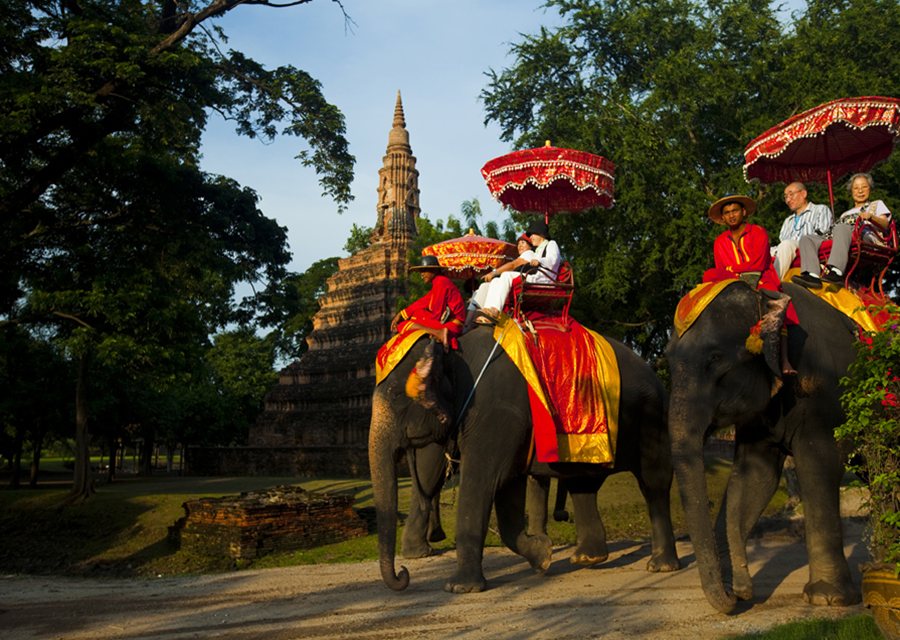Ayutthaya: overview
The old Thai capital, Ayutthaya, 20km (12.5 miles) north of Bang Pa-In, is a Unesco World Heritage Site containing the ruins of buildings destroyed in 1767 by the invading Burmese army.
Ayutthaya Historical Park
Ayutthaya is the former capital of Thailand and home to one of its greatest civilisations. In its heyday it was a fabulously wealthy, cosmopolitan city, until it was destroyed in 1767. Some of the sites are free to enter, others elicit a charge. There are dozens of distinctive buildings, and you will be hard-pressed to visit Ayutthaya in one day. For a tour of the ruins, you could start at Wat Phra Sri Sanphet. The temple was built in 1491 and once housed a 16m (52ft) Buddha image covered in gold. In 1767 the Burmese set fire to the statue in order to melt off the gold, destroying both temple and image. Built to honour three kings, the trio of much-photographed chedis standing in a line contain their remains.
At Wat Phra Ram, a graceful 14th-century building positioned amid reflecting pools, there is a beautiful cloister lined with stone Buddha images, and elephant gates punctuate the old walls. The temple was built in 1369 by King Ramesuan, on the site where his father was cremated. Next, visit Wat Phra Mahathat, one of the most beautiful temple complexes in Ayutthaya. Once it held treasures of precious stones, gold and crystal, and a relic of the Lord Buddha in a gold casket, which is now housed in the National Museum in Bangkok. This is where you'll see one of Thailand's iconic images – a stone Buddha head on the ground trapped in the roots of a bodhi tree.
Next to Wat Mahathat is Wat Ratchaburana, built in the 15th century around the tombs of Prince Ai and Prince Yo, brothers who slew each other in an elephant-back duel for the throne. Rare frescoes remain in the crypt, but any portable antiquities were stolen or removed to museums years ago.
For an overview of Ayutthayan-style art, visit the Chao Sam Phraya National Museum, which holds well-preserved statues recovered from the ruins. There are beautiful bronze Buddhas dating from the 13th and 14th centuries, 17th- and 18th-century door panels with religious, traditional or floral carvings, and a hoard of 15th-century gold jewellery.
Read more from the travel guide to Thailand









